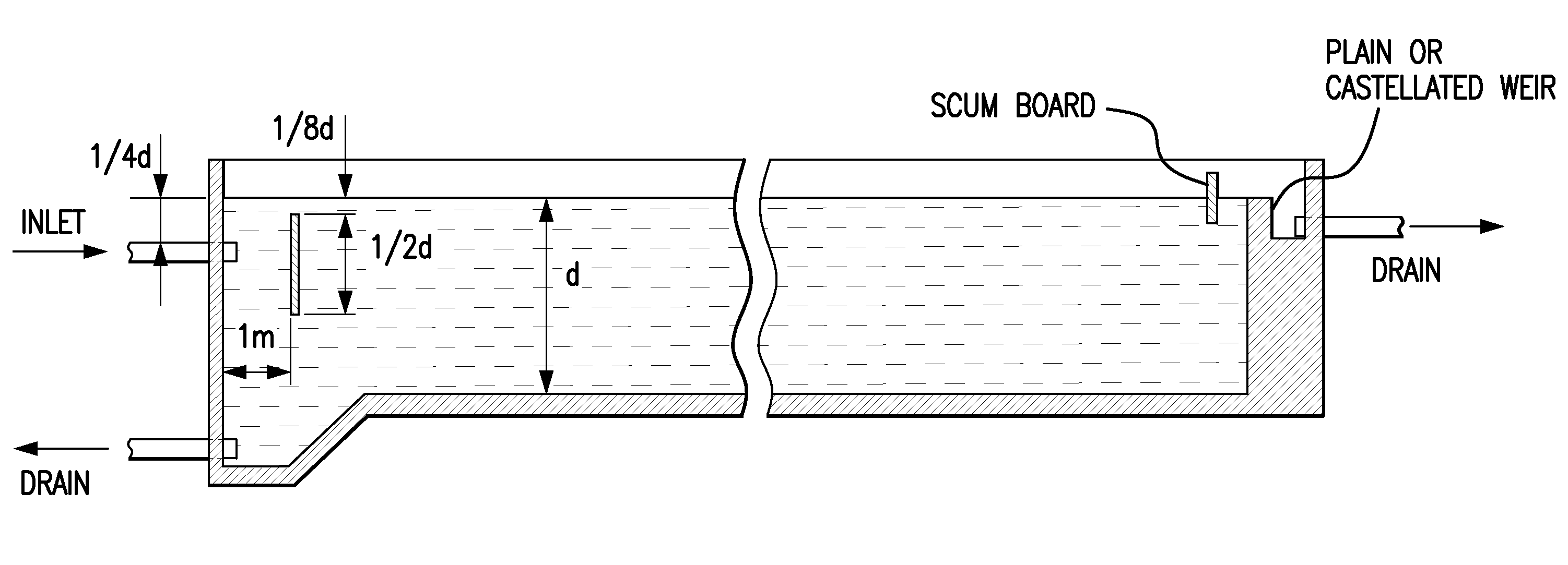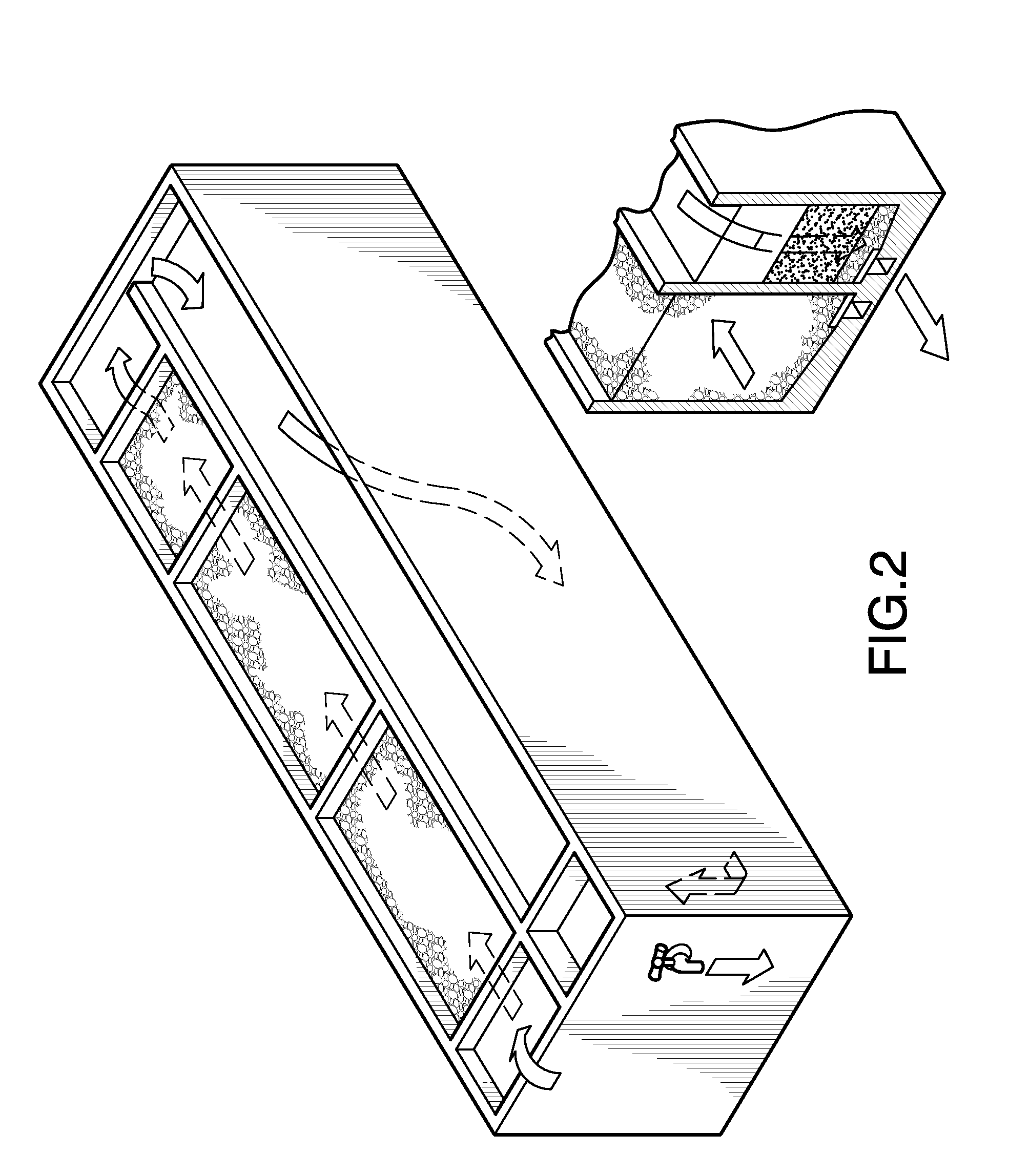Inexpensive fourth world primitive water cleanser with key parts transportable in suitcase size packaging
a water purification system and suitcase-size technology, applied in the field of water purification systems, can solve the problems of inability to sustain long-term external support, difficult to achieve long-term community development without long-term external support, and ineffective final water treatment, namely, using chemicals, to achieve the effect of improving water quality and enhancing purification
- Summary
- Abstract
- Description
- Claims
- Application Information
AI Technical Summary
Benefits of technology
Problems solved by technology
Method used
Image
Examples
Embodiment Construction
Four general stages are contemplated, filtration and settlement, potential heating, UV treatment, and ozonation.
Depending on the source, it will often be useful to test the water. There are kits ranging from inexpensive kits that take a few days to detect bacteria, but detect chemical contaminants quickly to very sophisticated kits. Some water will be so bad but likely not contaminated with chemicals that testing of the raw water is not particularly informative other than as a baseline. For some well-water though, it is important to know if trace chemicals such as arsenic are present.
Again referring to the Technology Notes of Water Aid quoted earlier, the following description is useful:
“Settlement
The quality of water from streams etc can often be significantly improved by the removal of suspended matter by simple settlement. Most suspended particles are heavier than water (although a few may float) and will settle in quiescent conditions; very fine clay particles may not settle out...
PUM
| Property | Measurement | Unit |
|---|---|---|
| Angle | aaaaa | aaaaa |
| Size | aaaaa | aaaaa |
| Efficiency | aaaaa | aaaaa |
Abstract
Description
Claims
Application Information
 Login to View More
Login to View More - R&D
- Intellectual Property
- Life Sciences
- Materials
- Tech Scout
- Unparalleled Data Quality
- Higher Quality Content
- 60% Fewer Hallucinations
Browse by: Latest US Patents, China's latest patents, Technical Efficacy Thesaurus, Application Domain, Technology Topic, Popular Technical Reports.
© 2025 PatSnap. All rights reserved.Legal|Privacy policy|Modern Slavery Act Transparency Statement|Sitemap|About US| Contact US: help@patsnap.com



